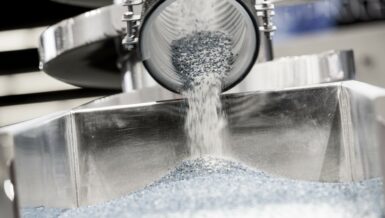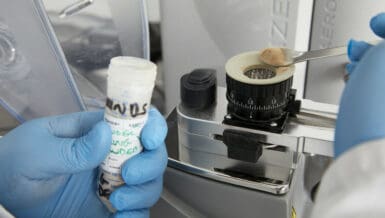This article delves into the intricacies of optimizing powder properties for dairy applications. We explore the key factors that influence the functionality and efficacy of dairy powders, including particle size, moisture content, and solubility. Understanding how these variables interact can significantly impact the final product’s texture, stability, and sensory attributes.
Moreover, we’ll delve into innovative techniques and technologies that facilitate the customization of powder properties to meet specific manufacturing requirements and consumer preferences. By mastering the art of powder optimization, dairy manufacturers can streamline production processes, minimize waste, and deliver superior-quality products that resonate with consumers’ evolving tastes and expectations. Join us on a journey to unlock the full potential of powdered dairy ingredients in the modern food industry.
How can you improve the flow properties of powder?
Ensuring optimal flow properties of powders is essential for maintaining efficiency and consistency in manufacturing processes across various industries. One effective strategy to enhance powder flow is through particle size optimization. Smaller particles tend to exhibit improved flowability due to reduced interparticle friction and increased cohesion. Techniques such as micronization or milling can be employed to achieve the desired particle size distribution, promoting smoother flow and preventing clogging in processing equipment.
Furthermore, controlling moisture content is crucial for optimizing powder flow. Excessive moisture can lead to agglomeration and the formation of cohesive clusters, impeding flow. Conversely, excessively dry powders may exhibit poor flow due to increased electrostatic forces. By carefully regulating moisture levels through drying or conditioning processes, manufacturers can improve the flow properties of powders, facilitating seamless handling and dispensing.
Additionally, surface treatment methods such as coating or lubrication can be employed to reduce interparticle friction and enhance flowability. Coating particles with hydrophobic or anti-caking agents can mitigate moisture absorption and improve powder flow, particularly in hygroscopic materials. Similarly, incorporating lubricants can reduce frictional forces between particles, promoting smoother flow and minimizing powder segregation during handling and transportation. By implementing these strategies, manufacturers can optimize the flow properties of powders, optimizing production efficiency and ensuring consistent product quality.
What are the properties of milk powder?
Milk powder, a staple in numerous food and beverage applications, boasts a diverse array of properties that contribute to its widespread utility. One of its most notable features is its extended shelf life, making it an ideal ingredient for products requiring long-term storage without compromising quality. Additionally, milk powder offers convenience and versatility, allowing for easy reconstitution with water to obtain liquid milk or incorporation into dry mixes without the need for refrigeration.
Moreover, milk powder exhibits excellent solubility, dissolving readily in liquids to form a smooth, homogeneous solution. This attribute makes it a preferred choice for applications such as instant beverages, soups, and sauces, where rapid dispersion is essential. Furthermore, milk powder contributes to the desired texture and mouthfeel of finished products, imparting creaminess and richness without the need for fresh dairy products.
Beyond its functional properties, milk powder also serves as a nutritional powerhouse, providing essential vitamins, minerals, and proteins. Its long shelf life, convenience, versatility, and nutritional value make milk powder a valuable ingredient in a wide range of food and beverage formulations, catering to the needs and preferences of consumers worldwide.
Approaches for improving the flowability of dairy powders
Enhancing the flowability of dairy powders is a fundamental step in refining manufacturing processes and maintaining product integrity. One pragmatic approach involves meticulous control of particle size distribution. By refining the particle size through methods like milling or micronization, manufacturers can mitigate interparticle friction, ensuring smoother flow and minimizing issues such as clumping or bridging during processing.
Managing moisture content is equally crucial for optimizing powder flowability. Excessive moisture can lead to undesirable agglomeration, impeding flow, while overly dry powders may suffer from increased electrostatic forces, hindering their ability to move freely. Through precise moisture control via drying or conditioning techniques, manufacturers can achieve the optimal moisture content to facilitate seamless handling and dispensing of dairy powders.
Furthermore, implementing surface treatment methods like coating or lubrication can significantly enhance flowability. Coating particles with hydrophobic agents reduces moisture absorption, while the addition of lubricants decreases friction between particles, promoting smoother flow and minimizing segregation during handling and transport. By adopting these pragmatic approaches, dairy producers can streamline the flow of powders, bolstering efficiency and ensuring consistent product quality.
Conclusion
In conclusion, optimizing powder properties for dairy applications is a multifaceted endeavor essential for achieving excellence in product quality and production efficiency. By delving into the intricacies of factors such as particle size, moisture content, and solubility, manufacturers can tailor dairy powders to meet specific manufacturing requirements and consumer preferences. Through innovative techniques and technologies, the customization of powder properties becomes not only feasible but also imperative in today’s competitive food industry landscape.
Moreover, addressing challenges related to powder flowability emerges as a key aspect of optimization. Strategies such as particle size optimization, moisture control, and surface treatment methods offer practical solutions to enhance flow properties, ensuring seamless handling and processing. These approaches not only streamline production processes but also minimize waste and uphold consistent product quality standards.
In essence, mastering the art of powder optimization empowers dairy manufacturers to unlock the full potential of powdered dairy ingredients. By embracing innovation and understanding the nuances of powder properties, they can navigate the evolving demands of consumers and position themselves at the forefront of the modern food industry. Through continuous refinement and adaptation, the journey towards optimizing dairy powder properties remains an ongoing pursuit of excellence.











































